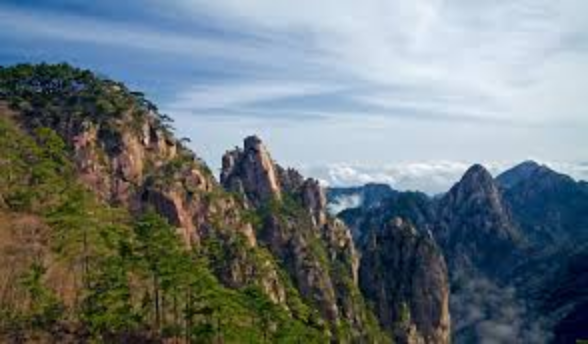
What Type of Mountain is Huangshan?
Mount Huangshan, formerly known as Mount Yishan, is a mountain range in southern Anhui province in eastern China. It's renowned for its scenic beauty, featuring granite peaks, Huangshan pine trees, and hot springs. But what type of mountain is Huangshan, geologically speaking?
The Geological Formation of Huangshan
Huangshan's dramatic landscape is the result of millions of years of geological processes.
- Tectonic Uplift: The mountain range was formed primarily by tectonic uplift. This upward movement of the Earth's crust, driven by the collision of tectonic plates, pushed the landmass upwards, creating the peaks we see today.
- Erosion and Weathering: Once uplifted, the forces of erosion and weathering shaped the mountains into their distinctive forms. Glaciers, wind, and water carved valleys, sculpted peaks, and exposed the granite bedrock. Huangshan's granite is particularly known for its ability to fracture into pillars and columns, creating the iconic jagged peaks.
Features that Define Huangshan's Mountain Type
While tectonic uplift and erosion are key to Huangshan's formation, several specific features help categorize it:
- Fault-Block Mountains: Huangshan is considered a fault-block mountain range. This means it was formed by the movement of large crustal blocks along fault lines. The uplift occurred along these faults, creating the steep slopes and valleys characteristic of fault-block mountains.
- Granite Peaks: The dominant rock type in Huangshan is granite, an igneous rock formed deep underground. This granite was exposed by erosion and weathering, giving Huangshan its rugged and dramatic landscape.
- Alpine Environments: Huangshan's high elevation contributes to its unique ecosystem. The mountain range boasts several peaks over 1,000 meters, creating alpine environments with distinct flora and fauna.
Impact of Geology on Huangshan's Culture and History
Huangshan's unique geology has profoundly influenced its cultural significance:
- Sacred Landscape: The mountain's dramatic peaks, often shrouded in mist, have long been considered sacred in Chinese culture. This led to the construction of numerous temples and monasteries, turning Huangshan into a center for religious pilgrimage.
- Artistic Inspiration: The breathtaking scenery of Huangshan has inspired generations of Chinese artists, poets, and photographers. The interplay of light and shadow on the granite peaks, the swirling mists, and the unique pine trees are recurring themes in Chinese art.
Huangshan's Place in Geological History
Huangshan's ongoing geological activity is evident in its hot springs, a reminder of the tectonic forces that shaped the region. These hot springs are not just a tourist attraction; they provide valuable insights into the Earth's inner workings.
Table Summarizing Huangshan's Characteristics
| Feature | Description |
|---|---|
| Mountain Type | Fault-block mountain range |
| Formation | Tectonic uplift and erosion |
| Rock Type | Primarily granite |
| Elevation | Several peaks over 1,000 meters |
| Notable Features | Jagged peaks, hot springs, unique pine trees |
| Cultural Significance | Sacred landscape, artistic inspiration |
Q&A
Q1: Is Huangshan a volcanic mountain?
A1: No, Huangshan is not a volcanic mountain. It was formed by tectonic uplift and erosion, primarily composed of granite, an igneous rock formed deep underground but not through volcanic activity.
Q2: How old is Huangshan?
A2: The geological processes that formed Huangshan began millions of years ago. The mountain range's current form is the result of ongoing uplift and erosion over a vast timescale.
Q3: Why are the pine trees in Huangshan so unique?
A3: The harsh, high-altitude environment of Huangshan has resulted in the evolution of a specific type of pine tree known as Huangshan pine (Pinus hwangshanensis). These trees are known for their resilience, their ability to grow in seemingly impossible locations, and their distinctive windswept shapes.